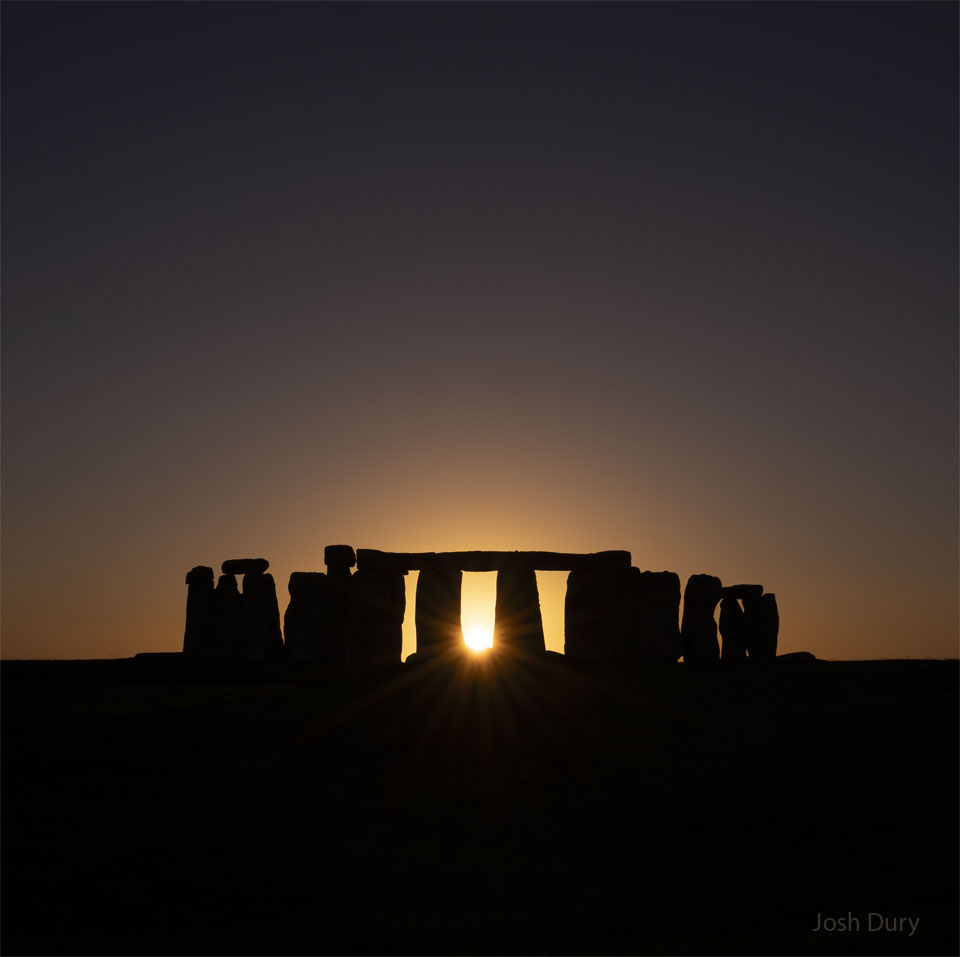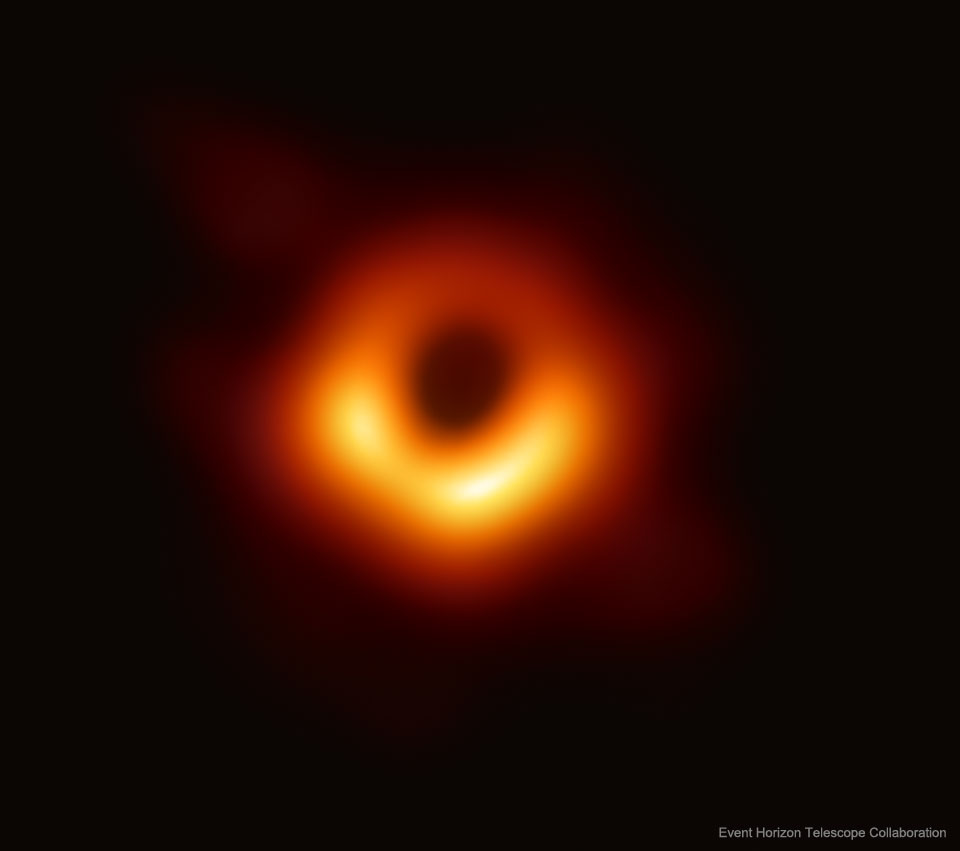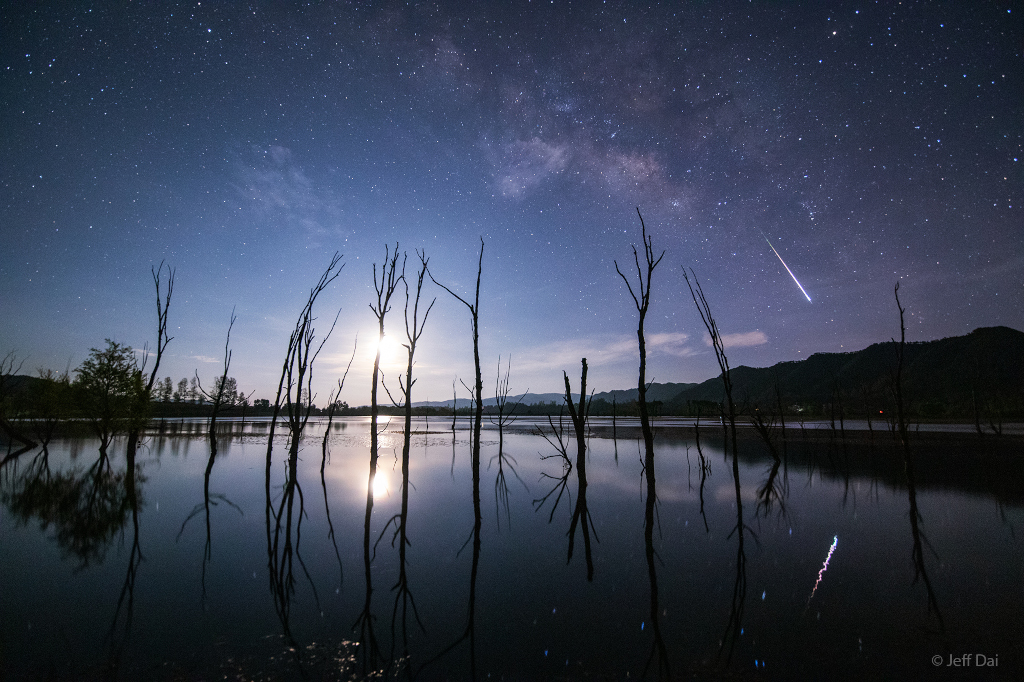Nombre total de pages vues
01/05/2022
PHOTOMICROGRAPHIE - Portrait d’une larve de chrysope
ASTRONOMY - First Horizon-Scale Image of a Black Hole
2022 May 1
Image Credit: Event Horizon Telescope Collaboration
Explanation: What does a black hole look like? To find out, radio telescopes from around the Earth coordinated observations of black holes with the largest known event horizons on the sky. Alone, black holes are just black, but these monster attractors are known to be surrounded by glowing gas. This first image resolves the area around the black hole at the center of galaxy M87 on a scale below that expected for its event horizon. Pictured, the dark central region is not the event horizon, but rather the black hole's shadow -- the central region of emitting gas darkened by the central black hole's gravity. The size and shape of the shadow is determined by bright gas near the event horizon, by strong gravitational lensing deflections, and by the black hole's spin. In resolving this black hole's shadow, the Event Horizon Telescope (EHT) bolstered evidence that Einstein's gravity works even in extreme regions, and gave clear evidence that M87 has a central spinning black hole of about 6 billion solar masses. Since releasing this featured image in 2019, the EHT has expanded to include more telescopes, observe more black holes, track polarized light,and is working to observe the immediately vicinity of the black hole in the center of our Milky Way Galaxy.
28/04/2022
ASTRONOMY - Lyrid of the Lake
2022 April 28
Image Credit & Copyright: Jeff Dai (TWAN)
Explanation: In the early hours of April 24 this bright Lyrid meteor flashed along the central Milky Way. For a moment, it cast a bright reflection across Lake Nian, Yunnan province, China. The annual Lyrid meteor shower, one of the oldest known, is active in late April, as our fair planet plows through dust left along the orbit of long-period comet Thatcher. The trail of the bright fireball points back toward the shower's radiant in the constellation Lyra high in the northern springtime sky and off the top of the frame. Just rising in that starry sky, light from a third quarter moon also cast a glow on the peaceful waters of the lake.
27/04/2022
ASTRONOMY - Moon Shadow on Jupiter
2022 April 27
Image Credit: NASA/JPL-Caltech/SwRI/MSSS; Processing & License: Thomas Thomopoulos
Explanation: What is that large dark spot on Jupiter? It's the shadow of Ganymede, Jupiter's largest moon. When Jupiter's moons cross between the Jovian giant and the Sun, they created shadows just like when the Earth's moon crosses between the Earth and the Sun. Also like on Earth, if you were in a dark shadow on Jupiter, you would see a moon completely eclipse the Sun. Unlike on Earth, moon shadows occur most days on Jupiter -- what's more unusual is that a spacecraft was close enough to record one with a high-resolution image. That spacecraft, Juno, was passing so close to Jupiter in late February that nearby clouds and the dark eclipse shadow appear relatively large. Juno has made many discoveries about our Solar System's largest planet, including, recently, rapidly expanding circular auroras.
26/04/2022
ASTROPHOTOGRAPHIE - Grains de Bailly lors d'une éclipse totale de Soleil
MERVEILLEUX MONDE SOUS-MARIN - L'atoll de Fakarava, dans l'archipel des Tuamotu
25/04/2022
ASTRONOMY - The Great Nebula in Carina
Image Credit & Copyright: Ignacio Javier Diaz Bobillo
Explanation: In one of the brightest parts of Milky Way lies a nebula where some of the oddest things occur. NGC 3372, known as the Great Nebula in Carina, is home to massive stars and changing nebulas. The Keyhole Nebula (NGC 3324), the bright structure just below the image center, houses several of these massive stars. The entire Carina Nebula, captured here, spans over 300 light years and lies about 7,500 light-years away in the constellation of Carina. Eta Carinae, the most energetic star in the nebula, was one of the brightest stars in the sky in the 1830s, but then faded dramatically. While Eta Carinae itself maybe on the verge of a supernova explosion, X-ray images indicate that much of the Great Nebula in Carina has been a veritable supernova factory.
24/04/2022
ASTRONOMY - Split the Universe
2022 April 24
Image Credit: NASA, Erwin Schrödinger's cat
Explanation: Just now, before you hit the button, two future universes are possible. After pressing the button, though, you will live in only one. A real-web version of the famous Schrödinger's cat experiment clicking the red button in the featured astronaut image should transform that image into a picture of the same astronaut holding one of two cats -- one living, or one dead. The timing of your click, combined with the wiring of your brain and the millisecond timing of your device, will all conspire together to create a result dominated, potentially, by the randomness of quantum mechanics. Some believe that your personally-initiated quantum decision will split the universe in two, and that both the live-cat and dead-cat universes exist in separate parts of a larger multiverse. Others believe that the result of your click will collapse the two possible universes into one -- in a way that could not have been predicted beforehand. Yet others believe that the universe is classically deterministic, so that by pressing the button you did not really split the universe, but just carried out an action predestined since time began. We at APOD believe that however silly you may feel clicking the red button, and regardless of the outcome, you should have a thought-provoking day. Or two.
SANTE/MEDECINE - Quel est l'alcool qui a le plus d'effet sur notre tour de taille ?
MERVEILLEUX MONDE SOUS-MARIN - Dauphin à long bec dans la mer Rouge
Dauphin à long bec (Stenella longirostris) à Shaab Samaday. Ces dauphins peuvent mesurer deux mètres vingt et peser 75 kilos, ils sont caractérisés par leur long rostre et leur corps fin. Ils se nourrissent de petits poissons et de calmars. On les trouve dans toutes les mers tropicales et subtropicales, en troupeaux de 25 à plusieurs centaines d'individus. Très sociables et joueurs, les dauphins de Shaab Samaday laissent les baigneurs les approcher, et parfois les toucher.
Lieu : mer Rouge, région de Marsa Alam.
© Alexis Rosenfeld
FuturaSciences
ASTRONOMY - Sunset Solstice over Stonehenge
2025 December 22 Sunset Solstice over Stonehenge Image Credit & Copyright: English Heritage , Josh Dury Explanation: Yesterday the Su...

-
2022 September 26 All the Water on Planet Earth Illustration Credit: Jack Cook, Adam Nieman, Woods Hole Oceanographic Institution ; Data ...
-
2025 May 11 The Surface of Venus from Venera 14 Image Credit: Soviet Planetary Exploration Program , Venera 14 ; Processing & Copyri...








